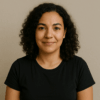Can remote study actually replace the impact of travel on your career?

Past offerings connected U.S. students to international faculty and hosts, from the University of Rochester’s WUN-UFMG course to Arcadia, IAU, The Intern Group, and the University of Auckland. These options ranged from single online courses and short intensives to 12-week internships and 4–24 week placements that fit work or study schedules.
These pathways combined academics, internships, research, and service learning. Many awarded credit or credit-eligible units with clear faculty approval steps and transfer guidance. Costs varied from no-cost options to tiered tuition and scholarship-supported internships.
The real payoff was practical skill-building: remote teamwork, cross-cultural communication, time-zone coordination, and portfolio deliverables aligned with employer needs. This directory will list verified lengths, credits, deadlines, and contacts to help early-career readers compare options and plan next steps.
Past virtual global education programs overview for U.S. students and young professionals
Many institutions expanded online study to keep students and young professionals engaged when travel paused. These offerings preserved credit pathways while adding career-focused elements.
The typical design combined faculty-led courses, structured mentoring, and cultural integration. Classes often included synchronous sessions with overseas instructors, intercultural workshops, and virtual tours.
- Faculty involvement and approval ensured coursework could count toward majors or minors.
- Blended schedules balanced live meetings and asynchronous work for U.S.-based participants in different time zones.
- Credit-bearing options kept academic progress steady while offering practical deliverables.
Concrete examples show variety: the WUN-UFMG course through the University of Rochester ran at no student cost. Arcadia offered summer faculty-taught online courses with optional internships in Europe. The Intern Group provided flexible internships across 3,000+ host organizations. The University of Auckland ran short research projects with close supervision and credit.
These formats replicated many learning outcomes of in-person abroad experiences while improving accessibility and scheduling flexibility.
| Provider | Format | Length / Credit | Cost / Note |
|---|---|---|---|
| WUN (U Rochester) | Single online course with UFMG | Short course / credit-eligible | No student cost; faculty approval required |
| Arcadia University | Faculty-led summer courses + optional internships | 6 weeks / 3 credits | $1,500 per course; deadline May 15 |
| The Intern Group | Remote internships (part/full-time) | 4–24 weeks / professional experience | Rolling admission; network of 3,000+ employers |
| University of Auckland | Research projects in culture & policy | 6–8 weeks / 3 units | NZD $3,237.50; supervised research |

Service directory of past virtual offerings by provider and program type
The following directory breaks down past provider options so readers can compare dates, costs, credits, and application steps.
WUN via University of Rochester — One online course delivered by UFMG (Brazil). Most sessions ran Oct–Feb at no student cost. Faculty approval was required for credit; contact [email protected] by Sept 8 for details.
Arcadia University Global Studies — Summer modules (June 7–July 15), 3 credits, $1,500 per course. Optional internships in London, Rome, and Athens; apply by May 15.
College Year in Athens (CYA) — 12-week internships matched to student interests across sectors in Greece. Credit-eligible, $1,250 fee, deadline May 15.

IAU — Six-week customizable pathway (May 21–July 16), 3–6 units, $1,200–$1,800. Courses, internships, consulting, and social impact projects; deadline April 14.
The Intern Group — Flexible 4–24 week internships (part- or full-time) with a 3,000+ employer network. Fee $2,990; rolling admission with two months lead time; credit-eligible.
University of Auckland — Research projects (6–8 weeks from June 21), 3 units in culture, media, public policy, and social sciences. Fee NZD $3,237.50; apply by May 2.
ISEP-style options — Multiple host universities offered short courses and internships across business, STEM, communications, social sciences, language & culture, and health (Hanyang, Vesalius, CSUSM, Università Cattolica, Providence, CEDEI, ICDS, Barcelona service learning, Pacific Worlds).
Students could mix courses, internships, and service learning across providers to build coherent plans that meet major requirements and career goals.
Virtual global education programs: courses, research, internships, and language learning around the world
A mix of credit courses, mentored research, and internship tracks let students keep academic momentum while gaining workplace skills.
Credit-bearing online courses and semesters
Providers offered structured, credit-bearing study that mapped to U.S. degree requirements. Arcadia ran 3-credit summer modules (June 7–July 15). Hanyang listed two-week January intensives and full spring semesters with 12–20 credits.
CSUSM delivered university courses plus English language and leadership certificates. Vesalius College combined semester studies with internships at organizations like NATO and EY. Milan’s Università Cattolica offered 14-week courses in business, fashion, and communications for up to 15 U.S. credits. Providence University paired Mandarin instruction with a 3-credit culture course for a language-and-culture track.
Virtual internships and experiential learning
The Intern Group provided flexible internships from 4–24 weeks across 3,000+ employers, while Arcadia placed students in London, Rome, and Athens. CYA ran 12-week internships in Greece that were credit-eligible. IAU’s six-week pathway mixed consulting projects and social impact placements.
Research-focused and themed options
Research tracks emphasized hands-on methodology and close supervision. The University of Auckland ran 6–8 week projects in culture, media, public policy, and social sciences (3 units). The Pacific Worlds course at the University of the South Pacific explored Oceania studies with sustainability and cultural perspectives.
Students could combine course work with internships or research to build tailored studies that bridge academics and applied work. Disciplines spanned business, health sciences, STEM, communications, and the social sciences, giving many options to match degree milestones and career needs.
Remote internships and service learning opportunities that built career-ready skills
Remote placements blended hands-on tasks with mentorship to help early-career participants show measurable results.
Absolute Internship
Absolute Internship ran remote placements for 4–16 weeks starting May 24. The track paired mentees with industry mentors and weekly career workshops. Fee: $2,000; scholarships available. Rolling applications close about 6–8 weeks before start.
The Intern Group
The Intern Group offered flexible internships from 4–24 weeks with 10–40 hours per week. Participants tapped a 3,000+ employer network and joined competency training plus a speaker series. Fee: $2,990; rolling timeline with ~2 months lead time.
CYA in Greece
CYA provided credit-eligible 12-week internships across sectors in Greece. Placements matched participant interests and produced supervised project outcomes. Fee: $1,250; deadline May 15.
Kaya Responsible Travel
Kaya supported grassroots development work with partners in Ecuador, Morocco, South Africa, Thailand, and Vietnam. Terms ran in summer, fall, and spring and focused on community capacity building.
FSD Uganda with SUNY Geneseo
FSD Uganda offered CBPR and community-based development internships guided by local NGOs. The model uses an asset-based approach and advising through SUNY Geneseo.
Virtual Service Learning in Barcelona
This ISEP pathway placed learners with nonprofits, combining remote project work and intercultural workshops to strengthen remote work skills and civic engagement.
- Key skills: stakeholder communication, project management, cross-cultural teamwork, and delivering outcomes across time zones.
- Hours and weeks can be tailored to fit academic studies or work commitments.
- Mentorship and training help bridge classroom learning to workplace expectations and build long-term professional networks and references.
Key details from past listings: length, credits, cost, and deadlines
Below is a concise snapshot of what each offering delivered in weeks, credits, price, and application timing. Use this to match pacing and academic needs before you apply.
Program length and academic credit snapshots
Lengths ranged from two-week intensives (Hanyang) to focused 6–8 week research or course blocks (IAU, Auckland). Arcadia ran an 8-week summer course and CYA offered a standard 12-week internship term.
Milan provided 14-week course tracks and Hanyang listed full semesters of 12–20 credits. Internship partners like The Intern Group offered flexible runs from 4–24 weeks to fit different schedules.
Credit models varied: Arcadia 3 credits, IAU 3–6 units, Auckland 3 units, Milan up to 15 U.S. credits, and several placements listed as credit-eligible if home faculty approve.
Tuition, scholarships, and rolling deadlines to note
Fees varied: $1,200–$1,800 (IAU), $1,500 per Arcadia course, $1,250 for CYA internships, $2,000 (Absolute), $2,990 (The Intern Group), and NZD $3,237.50 (Auckland). WUN via Rochester offered no student cost.
Many providers signaled scholarships or financial aid; Absolute and The Intern Group noted funding options. Hard deadlines clustered in April–May for summer terms, while internships often used rolling timelines requiring 6–8 weeks or ~2 months lead time for placement.
How to choose the right study or internship pathway
Deciding between course work, research, or an internship starts with clear academic goals.
First, list your required credits and career aims. Pick options that deliver the courses or supervised research you need. If you need credit, confirm faculty approval early.
Compare delivery styles: synchronous sessions, asynchronous content, and time-zone fit. Make sure you can access live meetings and meet assessment requirements.
| Decision point | What to check | Example providers |
|---|---|---|
| Academic credit | Faculty approval, transfer rules | WUN (U Rochester), Arcadia, Milan |
| Placement type | Research vs industry internship | University of Auckland, The Intern Group, Absolute |
| Support & outcomes | Mentoring, sample projects, references | CYA, IAU, Kaya |
Assess tech needs, meeting cadence, and collaboration tools so you can maintain productivity. Weigh cost, duration, and funding to match your schedule.
- Map credits with advisors.
- Review sample deliverables and supervision.
- Create an application timeline with approvals and onboarding.
Conclusion
Well-designed study pathways showed they can deliver rigorous credit and hands-on experience without travel disruption. Providers like WUN (U Rochester), Arcadia, CYA, IAU, The Intern Group, and the University of Auckland modeled how coursework, research, and internships link to career outcomes.
Shortlist options that match your degree needs and check credits, length, and weekly hours early. Seek scholarships and confirm faculty approvals to secure summer or term placements. Align funding, sample deliverables, and application dates so you avoid last-minute bottlenecks.
Take practical next steps: review the directory, map requirements to your major, and apply with clear timelines. These past offerings prove students can advance credit and career goals while building transferable skills for business, policy, health, and the social sciences.
FAQ
What types of online courses and internships have past programs offered for U.S. students and young professionals?
Past offerings included credit-bearing online courses, short summer sessions, semester-length study, research projects, and remote internships. Providers such as Arcadia University, College Year in Athens, and The Intern Group ran internships across sectors like business, public policy, media, STEM, and community development, while universities like the University of Auckland and University of Rochester partnered on research-focused courses.
How do credits transfer from these courses and internships to my home institution?
Many providers issued credits through partner universities or directly through the hosting institution. Check course syllabi and contact your registrar or study abroad office before enrollment to confirm transfer agreements, credit equivalencies, and whether coursework satisfies major or general education requirements.
What typical program lengths and time commitments should I expect?
Programs ranged from short intensives (2–6 weeks) to semester-length options (12–16 weeks). Remote internships often ran 4–24 weeks with flexible weekly hours, while faculty-led courses and research projects usually followed a standard semester schedule or compressed summer timetable.
Are there scholarships or financial aid available for these offerings?
Many institutions and providers offered scholarships, need-based aid, or tuition waivers. Check the provider’s financial aid page—Arcadia, ISEP-style consortia, and some universities listed rolling scholarships. Also ask your home college about study abroad grants and departmental funding.
Can I do a remote internship that leads to meaningful career outcomes?
Yes. Structured remote internships from The Intern Group, Absolute Internship, and university-affiliated placements provided mentoring, professional development workshops, and networking opportunities. These experiences often include deliverables, regular supervision, and employer evaluations that can enhance resumes and LinkedIn profiles.
How were internships and service-learning placements matched to student interests?
Providers matched participants using intake questionnaires, CV reviews, and interviews. Programs like CYA and FSD Uganda coordinated placements based on academic background and career goals, and some providers offered customizable placements to align with specific sector interests.
What fields and disciplines were covered by research and themed programs?
Offerings covered humanities and social sciences, public policy, media and communication, environmental studies, health, business, and STEM. The University of Auckland and regional initiatives like Pacific Worlds at the University of the South Pacific emphasized area studies and interdisciplinary research themes.
How did language learning and cultural components work in remote offerings?
Language modules and intercultural workshops were integrated into many courses and internships. Programs included synchronous conversation sessions, cultural seminars, and local community partner engagements to build language competence and cultural awareness alongside academic work.
What application steps and deadlines should applicants watch for?
Typical steps include program selection, application form, transcript submission, statement of purpose, and references. Deadlines varied—some providers had rolling admissions, while summer and semester programs had fixed dates. Apply early and confirm visa or technology requirements if applicable.
How can I verify academic quality and faculty oversight for these offerings?
Look for course syllabi, faculty bios, and accreditation details on provider websites. University-affiliated offerings usually list faculty instructors and learning objectives. Verify assessment methods and contact faculty or program coordinators for clarification on supervision and grading standards.
Are there short-term opportunities suitable for busy professionals or students with limited availability?
Yes. Short intensives, micro-courses, and 4–6 week internships were designed for learners with limited time. Providers like Absolute Internship and Arcadia offered compressed schedules and modular coursework to fit tight calendars while delivering measurable learning outcomes.
What technology and resources do I need to participate successfully?
Basic needs included a reliable internet connection, a modern laptop, video conferencing software, and access to learning platforms (e.g., Canvas, Moodle). Some research projects required specialized software; check the program’s tech requirements and available student support before enrolling.
How were outcomes measured for experiential learning and internships?
Programs tracked outcomes via final projects, performance evaluations, reflective journals, and employer feedback. Career workshops and alumni networks often helped participants convert experience into tangible career steps like interviews, portfolio pieces, or research publications.
Can community-based or development internships be done remotely with meaningful impact?
Remote community development placements focused on capacity building, research support, and virtual collaboration with local partners. Organizations like FSD Uganda and Kaya Responsible Travel structured remote roles around clear deliverables and ongoing local supervision to ensure ethical, meaningful engagement.
How do I compare providers and choose the best fit for my goals?
Compare learning outcomes, credit recognition, faculty involvement, internship supervision, cost, scholarship availability, and alumni feedback. Prioritize programs that align with your academic plan and career aims, and consult your academic advisor and career services for guidance.




